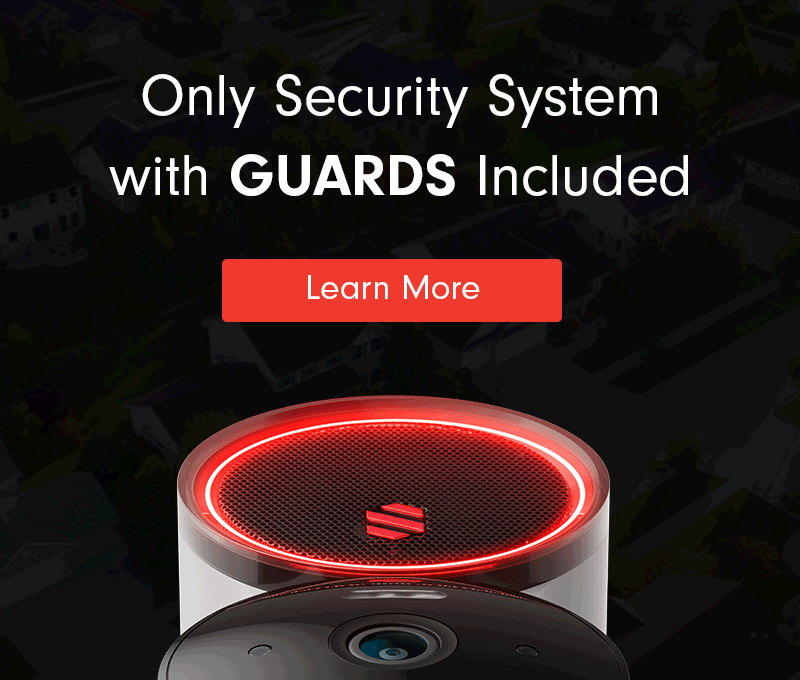CPTED: Crime Prevention Through Environmental Design

Fortification used to be the only option to protect yourself, your family, and your property. High walls. Locked gates. Strong doors. Bars on windows. Maybe even a guard dog or paid security personnel. There’s a reason the aristocracy lived in castles.
Then, in 1853, Reverend Augustus Russell Pope patented the world’s first security alarm. He sold it to Edwin Holmes, who later launched a successful security business in both Boston and New York City. Better home security was finally available to the masses.
The modern security alarm has evolved to include motion sensors, live video streaming, 2-way communication, and more. Security systems have gained in popularity and affordability in the 150 years since, and they’re now a standard and effective way to protect your property. In fact, a home without one is 300% more likely to get burglarized.
The good news is that burglaries in the United States have been steadily trending down from a high of 3.2 million in 1991.

The bad news is that there are still over one million each year, resulting in $3.4 billion in economic losses.
The Origin of Crime Prevention Through Environmental Design
Strong locks and traditional alarms are good, but they’re a reaction to crime. Starting in the early 1960s, various concerned individuals started looking at property crime more holistically. Why does it happen? And how can we prevent it?
Elizabeth Wood and Jane Jacobs believed that contemporary urban planning was creating isolated, disconnected, and deserted neighborhoods.
Schlomo Angel wrote a paper called Discouraging Crime Through City Planning in 1968.
“The physical environment can exert a direct influence on crime settings by delineating territories, reducing or increasing accessibility by the creation or elimination of boundaries and circulation networks, and by facilitating surveillance by the citizenry and the police.” – Schlomo Angel
Architect Oscar Newman came up with the “defensible space” approach, while criminologist C. Ray Jeffery coined the term “crime prevention through environmental design” (CPTED) for his book released in 1971. Later theories like the “broken windows” theory from James Wilson and George Kelling built upon those ideas. These gave us the modern structure of CPTED.
Crime prevention through environmental design is a philosophy that encourages the use of deliberate design elements to eliminate or reduce criminal behavior before it happens. The greater the risk of a would-be criminal being seen or caught, the less likely they are to commit a crime. CPTED strategies force someone to think twice before breaking the law. That’s often all it takes to convince them to move on.
If you’ve ever chosen a well-lit street over a dark one on your way home at night, you’ve experienced it. If you’ve installed motion sensors outside your home, you’ve used them. And if you’ve participated in neighborhood watch programs with strategically placed signs around the community, you’ve lived it.
It’s proactive rather than reactive.
The Five Pillars of CPTED
There are five overlapping pillars of crime prevention through environmental design:
The first two pillars limit the opportunity for crime, the third encourages a degree of social control, and the fourth and fifth grow the community’s ability to impede crime via their activities and connectedness.
Natural Surveillance
This pillar leverages the idea that “more eyes are better than none.”
By increasing the visibility of your property—outdoor lighting, clear sightlines, low fences, and shrubs—you increase the chance that a friend, neighbor, or stranger will see a crime happening and intervene or report it.
Read More About Natural Surveillance
Natural Access Control
There’s public space, and there’s private space.
Sometimes those lines get a little blurry. Natural access control makes a clear distinction between the two with signs, fences, and other barriers. When it’s clear to everyone where people should and shouldn’t be, it stands out when someone ignores those conventions.
Read More About Natural Access Control
Territorial Reinforcement
People generally respect the property of others. And when everyone knows it’s your property, they’re going to be mistrustful of anyone else using it.
Well-groomed landscaping, fences, lighting, clearly marked boundaries, walkways, and home security cameras broadcast to the world that this is your property. That means you care for it. And you will defend it against invaders.
Read More About Territorial Reinforcement
Activity Support
When you promote legitimate use of an area by legitimate users, you have more people around with more eyes on the surrounding area. This increases the risk of detection for would-be burglars.
A neighborhood park with overgrown, rusted equipment and poor lighting will eventually start attracting people to use it for drugs, drinking, or other inappropriate uses. The houses around the park are at increased risk simply because of their proximity.
But a park with regular sporting activities, picnics, and other legitimate events helps keep away suspicious characters. It also creates more eyes on the street if they do show up.
Read More About Activity Support
Maintenance
A well-maintained property will attract fewer would-be criminals than one that is ignored and falling apart.
A neighborhood full of broken windows and graffiti will attract a different crowd compared to one that is scrubbed clean and regularly repaired. If a property looks ignored and abandoned, people will treat it that way. The same applies to a neighborhood as a whole.
When everyone is actively involved in taking care of it, it fosters a strong sense of community, connectedness, and looking out for one another.
Why CPTED Is Worth the Effort
Once you identify problems and solutions and apply CPTED strategies, communities become more stabilized, crime decreases, and residents become more invested in the community’s quality of life.
People feel safe spending time outdoors—which means more eyes and ears on the street—and there’s a greater feeling of community and belonging. Everyone is looking out for everyone else.
Studies have found that implementing crime prevention through environmental design principles resulted in a 30-84% drop in robberies.
“CPTED is essentially the premise that people with malevolent intent want to be clandestine and don’t want to be detected or observed. We can change the built environment to make them more observable, thereby creating fear that they’ll be caught either during the incident or afterward.” – Sean Ahrens, Security Market Group Leader, Affiliated Engineers
Crime will never go away completely. But we can take proactive steps to reduce or stop it before it happens using CPTED solutions and strategies.
Need a Solution that Prevents Crime?
Deep Sentinel is the only security technology that delivers the experience of a personal guard on every customer’s home and business. Visit deepsentinel.com or call 833-983-6006

